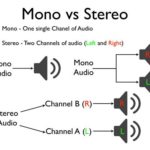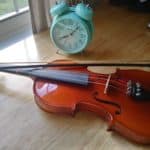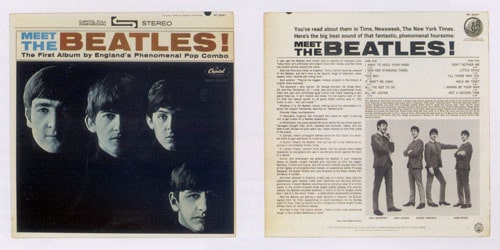If you’re like me then your first priority and interest is music actually the Songwriting part of the music. This handicaps you when you enter the world of technology and recording, thinking too much about what you don’t know. So let’s clear it up, no question about technology is a stupid question. One basic question that is most asked when you are new to the recording is about stereo. Can you record a Stereo with one Microphone?
No, In order to record music in Stereo, you need
- A Stereo Microphone that typically employs 2 mics in one capsule that will input a mono signal and outputs stereo audio sound or
- You need 2 mics paired together that record using Stereo techniques recording in different frequencies, distances, or times.
Many Songwriters that are just starting out are limited on a few things like Money-Technical skills in the field of Recording. I have been preaching the fact that you can get around most of it with simple recording techniques. This one simple question is listed in Basic Recording 101.
Mono vs Stereo Sound
In Mono Sound 1 single channel is used. It can be reproduced through several speakers, but all speakers are still reproducing the same copy of the signal. In Stereo Sound 2 or more channels are used (typically two). You can use two different channels and make one feed one speaker and the second channel feed a second speaker which is the most common stereo setup. This is used to create directionality, perspective, and space.  In a common stereo setup of two channels: left and right, one channel is sent to the left speaker, and the other channel is sent to the right speaker.
In a common stereo setup of two channels: left and right, one channel is sent to the left speaker, and the other channel is sent to the right speaker.
The Difference between Stereo & Mono is the Difference created by Distance & Time
Now, by controlling to which channel you send the signal you can control the position of the sound. You’ll hear sounds coming from different directions depending on which speaker you send the signal to, or in which proportion you can send just a little more to the right speaker, so the sound is positioned just a little bit to the right. Sounds with equal proportions on both speakers will appear to come from the center.
Simply put If you are listening in Stereo there is a difference in Time. one of your ears will hear some different than your other ear as small as that may be. In Mono, both ears will receive the same information. Recording in the early days as in Pop Music used mixing in stereo for isolating one sound or instrument tracked to one side and another instrument or vocals to the other.
Because we have two ears, on opposite sides of our head, we hear a source of sound from two directions. Each takes a slightly different time to arrive, so we have a good idea where the sound is coming from. To record this stereo sound, two mics at least are used. Actually, the best theoretical position for these two mics is at 180 degrees away from each other just like our ears.
In Stereo the other difference will be a difference in Frequency. By angling the microphone in different directions in relation to the instrument, each microphone will pick up a slightly different balance of frequencies. The greater the angle, the more exaggerated the stereo effect will be.
With listening in Mono, there is no specialty or separation in the sound. The sound in each ear is identical. It can be recorded with just one mic. In a regular stereo setup of two channels: left and right, one channel is sent to the left speaker, and the other channel is sent to the right speaker. Now, by controlling to which channel you send the signal you can control the position of the sound.
You’ll hear sounds coming from different directions or positions depending on which speaker you assign the signal to, or how much of the signal is sent you can send just a little more to the right speaker, so the sound is positioned just a little bit to the right which will enhance the frequency of the sound as a whole.
Sounds with equal proportions on both speakers will appear to come from the center. Drums are normally assigned to the Center position. This ability for the listener to visually see the location of the instrument in the mix by listening. This is called Sound Localization.
There are situations when recording in Stereo is not as appropriate and Mono should be the method of recording. Miking a Bass guitar Snare or Kick Drum and in other types of scenarios for some reason that won’t get into Mono recording will be the better result.
What is a Stereo Microphone
A Stereo Microphone is a device that can input a Mono source and output a Stereo sound. You need two mics to capture a Stereo sound so there will always be 2 capsules in the setup to accomplish this. Using a Stereo Mic has a lot of differences right off the bat.
You can use the mic on any type of instrument and have more control of the narrowing and widening of the image directly off the amp or the instrument. These mics can be used to lead, Rythm, and Solo Guitar. There are several techniques to accomplish a stereo recording:
Stereo Miking Techniques
- X/Y Stereo Recording Technique
- A/B Stereo Recording Technique
- ORTF Stereo Recording
- Blumlein Pair Stereo Recording
- Mid/Side Stereo Recording
An X/Y Stereo Technique uses 2 matched small-diaphragm condensers mics that can work in tangent with the paired mics making an entire stereo effect that will be created from the differences in frequency balance. The upside to this is because of a cardioid polar pattern there are no issues with monophase cancellation either.
Rodes has a great one check it out! Rode NT4 X/Y Stereo Condenser Microphone Offers a perfect X/Y stereo array without the need for matched pair microphones, complex stereo bars, and equipment Ideal for drum overheads, percussion, choir vocals, environmental recording, and sound design in a studio or in the field
An A/B Stereo Technique uses 2 Omnidirectional mics, usually, small-diaphragm condensers, Point both mics toward the instrument, at a distance of afoot, and spaced two feet apart. When experimenting with this technique, try making adjustments to both the distance of the mics from the instrument, as well as the distance of the mics from each other.
Separating the Mono Mics from each other will widened that effect in the placement or the Mix. The stereo image is created because the time of arrival at each microphone is slightly staggered. The frequency balance is different as well, which will provide an added level of stereo width. So the Stereo image is according to Time & Frequency Difference
An ORTF Stereo Recording Technique uses 2 directional mics, usually, small-diaphragm condensers the mics are spread outward at an angle of about 110 degrees, with the capsules spaced 17 cm apart or 6.6 inches apart. The technique is basically a combination of the previous two.
The microphones are physically spaced apart, like with A/B recording, which will yield a wider stereo image. Then it uses directional mics, like with X/Y recording, so it should pick up less of the ambient room sound. Use something like this matched pair with a great price Rode M5-MP Matched Pair Cardioid Condenser Microphones
A Blumlein Pair Stereo Technique uses 2 Bi-Directional Mics. They are positioned the same as the X/Y technique. Compared to the X/Y technique, the Blumlein Pair technique captures a greater Staying with the quality of Rodes family and mid-price here is a Bi-Directional Ribbon that you can use for the technique-Cascade Microphones FAT HEAD BE Stereo Pair – Grey Body/Anodized Silver Grill,
A Mid/Side Stereo Recording Technique uses 1 small-diaphragm condenser mic – either cardioid or omnidirectional & 1 large-diaphragm condenser mic -the large-diaphragm condenser mic is placed sideways at a 90-degree angle from the instrument. This mic will record sound on both sides and will function as the “side” in the term mid/side.
The other mic is positioned on top or below the one and is pointed directly toward the instrument. It will function as the “mid” in the term mid/side. Rode NTR Premium Active Ribbon Microphone
How to mix the signals:
- Duplicate the “side” channel and reverse the polarity of the duplicated channel Combine the two side channels onto one stereo track
- Mix in the mid-channel with stereo side channels to adjust the width. The greater the level of the sides compared to the mid, the greater the stereo width.
- How it should sound:
- Mid-side recording may be complicated, but it offers all the advantages of the other 3 techniques, without the downsides. It offers the added stereo width of the A/B technique plus offers the mono compatibility of the X/Y technique
- Finally, it allows you if you want to increase the room ambiance to something resembling the Blumlein Pair technique
Should I Record in Mono Or Stereo
Certain instruments, like a vocal, violin, or electric guitar, have only one spatial component and sound. They have no stereo information at the start. You are not adding anything by recording it in stereo which effectively means having two microphones on the source or just duplicating the same sound on both left and right channels you’re just adding useless noise and phasing.
Sometimes, on electric guitar, in particular, you’ll have two mics, but usually just to enrich the tone instead of creating a stereo sound. Most of the time You’ll pan them in the same place in the stereo field. Even with drums adding a mic will only create effects like depth or room size. It’s not so much about recording in mono or stereo.
A lot of Home Recording enthusiasts record in mono. I can admit that I record pretty much everything I do in mono, even when it’s a two-channel source. That way I have the ability to treat each side independently when the mixed time comes. With the exception of a few parts that I know will retain and/or need to be stereo, everything else is done in mono and panned and treated accordingly.
Many bands, like The Beatles, saw stereo as gimmicky and so focused more on the mono mix than the stereo. Many stereo mixes were done by studio engineers and producers with less than full cooperation from the artists. Other artists, however, embraced it and used it as an advantage.
Recording in Mono can carry a little more punch and a bit more clarity while Stereo spreads the sound around filling up the room. Sometimes the hard-panning in early stereo recording separates the instruments too much and musicians can find it hard to listen to after a few years.
It’s all about the listener and what they are listening to. If you are as old as I am you can remember when the front covers of records said “Recorded in Stereo”
JimGalloway/Author

Author/Editor

